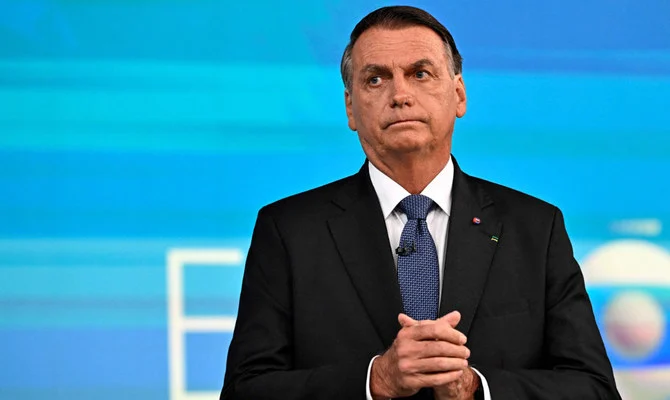
- ARAB NEWS
- 01 Jul 2025

A defining feature of the 21st century so far has been the growth of populism, which has sent not only political but also economic shock waves across much of the world.
Yet, while some continue to argue that the populist wave of the past two decades might not yet have peaked, new research published last week suggests an unexpected reversal in the trend. Data from the Tony Blair Institute for Global Change showed that the number of populist leaders has fallen to a two-decade low across the world.
To put it another way, the number of people living under populist rule has fallen by 800 million since the COVID-19 pandemic began. According to the report, 1.7 billion people now live in a country with a populist leader, compared with 2.5 billion in 2020. During the period since the pandemic began, therefore, there has been a reverse, at least temporarily, in two decades of growth of the size of this population.
At the beginning of the 21st century, only a handful of key states with populations of more than 20 million people — including Italy, Argentina and Venezuela — had populist leaders.
This was an era during which, for example, controversial billionaire businessman Silvio Berlusconi was the maverick, right-of-center prime minister of Italy from 2001 to 2006, presaging the rise of Donald Trump. Hugo Chavez was president of Venezuela from 1999 until 2013, during which he aligned himself with the governments of Fidel, and then Raul, Castro in Cuba.
This relatively small “populist club” expanded significantly after the onset of the 2008-09 international financial crisis, which heralded what has been called the great recession. However, the steepest rise in populism has been in the past decade through elections around the world, including Trump’s US presidential victory in 2016.
Latin America, long a bastion of populism, has recently experienced the biggest decline in populist rulers. This included the defeat last autumn of Jair Bolsonaro in the Brazilian presidential election.
While populism in Latin America tends to lean toward socialism, Bolsonaro was a key outlier thanks to his right-wing politics.
In contrast, populism is still widely prevalent in Europe, where its biggest success in 2022 was Giorgia Meloni’s election as prime minister of Italy. Meloni, a rightist nationalist who is widely seen as heir to the legacy of wartime dictator Benito Mussolini, exemplifies the way in which European populism tends to be of a different, right-wing variety to that found in Latin America.
Globally, the 21st-century populist wave is just one of a series over the course of the past several hundred years. Populism has been a recurring phenomenon in some countries, including the US, for instance.
While it is possible populism will decline further, there is a plausible alternative case to be made for why it might rise again in the 2020s fueled by the aftermath of the coronavirus crisis.
Andrew Hammond
However, the footprint of the latest wave of populism has been bigger than ever before, stretching from Asia Pacific to the Americas, and includes current leaders such as Mexican President Andres Manuel Lopez Obrador and Indian Prime Minister Narendra Modi.
While leaders on different continents might embrace differing brands of populism, they tend to win power through the adoption of common campaign tactics. These include attacks on multinational organizations and the so-called “fake media.”
The diverse nature of the rise of this political populism around the world, from the Americas to Europe, has been described as a “revolutionary wave” by Sir Nigel Inkster, former director of operations for the UK Secret Intelligence Service.
Looking to the future, one key question is whether the phenomenon is indeed now tailing off or if it could rebound.
While it is possible populism will decline further, there is a plausible alternative case to be made for why it might rise again in the 2020s fueled by the aftermath of the coronavirus crisis, which triggered in 2020 a deeper, broader global recession even than that experienced during the international financial crisis more than a decade ago.
There are two sets of reasons why the scale of political populism will remain at a historically high level.
Firstly, while the world might be over the worst of the health crisis caused by the pandemic, its economic legacy persists and the world is facing new headwinds in 2023, exacerbated by the war in Ukraine. The International Monetary Fund asserted last week that a third of the global economy will be in recession this year.
Yet it is not only the absolute decline in economic output that is key here, but also rising economic inequality. While some affluent cohorts have seen their wealth increase, even during the pandemic, poorer people have more often watched their incomes stagnate or, worse, decline.
There is an intergenerational impact, too, with young people disproportionately more likely to lose their jobs. This raises the risk of long-term damage to earnings potential and job prospects, fueling discontent.
Secondly, there are factors completely unrelated to the economic slump that might also drive populism. They include the disruptive, mobilizing role of social media and other new technologies.
Taken together, and despite the recent decline in populism around the world, these factors mean that the political phenomenon might yet rebound. The economic aftermath of the coronavirus crisis, combined with the effects of the war in Ukraine, raise the prospect of further, significant international instability to come.
• Andrew Hammond is an associate at LSE IDEAS at the London School of Economics.